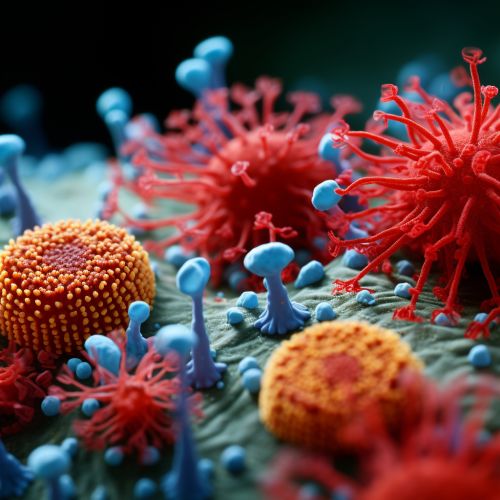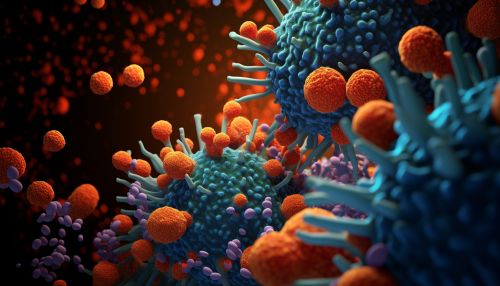Complement System
Overview
The complement system is a part of the immune system that enhances (complements) the ability of antibodies and phagocytic cells to clear microbes and damaged cells from an organism, promote inflammation, and attack the pathogen's cell membrane. It is part of the immune system's innate defense, functioning as the first line of defense against infections.
Components of the Complement System
The complement system consists of a number of small proteins found in the blood, in general synthesized by the liver, and normally circulating as inactive precursors (pro-complement). When stimulated by one of several triggers, proteases in the system cleave specific proteins to release cytokines and initiate an amplifying cascade of further cleavages.


The three biochemical pathways activate the complement system: the classical complement pathway, the alternative complement pathway, and the lectin pathway.
Classical Complement Pathway
The classical complement pathway typically requires antigen-antibody complexes for activation (specific immune response), following the binding of antibodies to the pathogen surface. This pathway is a crucial component of the humoral immune response.
Alternative Complement Pathway
The alternative complement pathway does not require antibody activation and can begin directly on pathogen surfaces. This pathway is a crucial component of the innate immune response.
Lectin Pathway
The lectin pathway is homologous to the classical pathway, but instead of requiring antibodies for activation, it is triggered by mannose-binding lectin (MBL) binding to mannose residues on the pathogen surface.
Functions of the Complement System
The complement system performs several functions in the immune response, including lysis of pathogens, opsonization, and activation of inflammatory responses.
Lysis of Pathogens
The complement system can directly kill pathogens through a process called lysis. This process involves the formation of a membrane attack complex (MAC) that creates a pore in the pathogen's cell membrane, leading to cell death.
Opsonization
Opsonization is the process by which pathogens are marked for destruction by phagocytes. Complement proteins bind to the surface of the pathogen and provide binding sites for phagocytes, enhancing phagocytosis.
Activation of Inflammatory Responses
The complement system also plays a role in the activation of inflammatory responses. Certain complement proteins are anaphylatoxins, which can trigger mast cell degranulation and the release of inflammatory mediators.
Regulation of the Complement System
The complement system is tightly regulated to prevent inappropriate activation and damage to host tissues. Several regulatory proteins found on host cell membranes and in plasma control the complement system. These proteins include factor H, decay-accelerating factor (DAF), and membrane cofactor protein (MCP).
Clinical Significance
Deficiencies or malfunctions in the complement system can lead to a variety of diseases, including immune complex diseases, hereditary angioedema, and paroxysmal nocturnal hemoglobinuria. In addition, the complement system is a target for many pathogens to evade the immune response.
